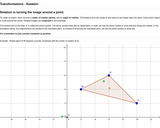
Informative text followed by images with hot spots describing rotation of an object around a point.
- Subject:
- Geometry
- Mathematics
- Material Type:
- Interactive
- Provider:
- Michigan Virtual
- Date Added:
- 12/06/2018

Informative text followed by images with hot spots describing rotation of an object around a point.
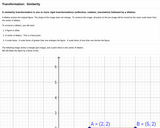
Definition and description of similarity with images displaying a transformation using a point of dilation and a scale factor.
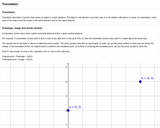
Informational text about translations, image of translated point, interactive drag the words, image of translated triangle, interactive drag and drop translated points of triangle.
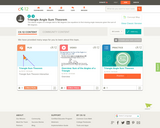
This short video and interactive assessment activity is designed to teach third graders an overview: sum of the angles of a triangle.
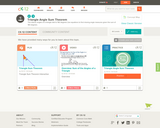
This short video and interactive assessment activity is designed to give fourth graders an overview of the sum of the angles of a triangle.
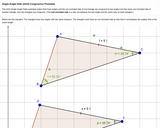
Definition of Angle-Angle-Side Congruence postulate, followed by image of two triangles with hotspots and question if the triangles are congruent.
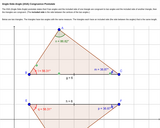
Definition of Angle-Side-Angle Congruence postulate, followed by image of two triangles with hotspots and question if the triangles are congruent.
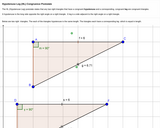
Definition of Side-Angle-Side Congruence postulate, followed by image of two triangles with hotspots and question if the triangles are congruent.
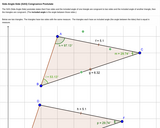
Definition of Hypotenuse-Leg Congruence postulate, followed by image of two triangles with hotspots and question if the triangles are congruent.
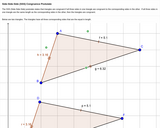
Definition of Side-Side-Side Congruence postulate, followed by image of two triangles with hotspots and question if the triangles are congruent.
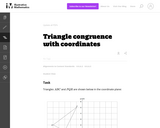
This task gives students a chance to explore several issues relating to rigid motions of the plane and triangle congruence. As an instructional task, it can help students build up their understanding of the relationship between rigid motions and congruence.
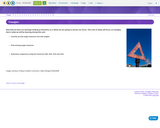
General overview of why and how to apply the triangle congruency shortcuts.
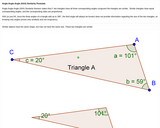
Definition of Angle-Angle-Angle Similarity postulate, followed by image of two similar triangles, a second image with several similar triangles with hotspots.
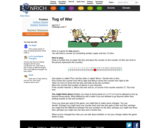
This Nrich game is designed to get children used to moving along a number line either side of a central point adding and subtracting within 27. It can help to introduce the idea of negative numbers or practice fluency with negatives by changing the midpoint to 0.
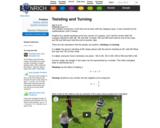
This Nrich problem introduces an intriguing trick which provides a context for practicing manipulation of fractions. Watching the video, or perhaps trying the trick out for themselves, can engage students' curiosity, and lead to some intriguing mathematics to explore and explain.

Jackie and Matt are looking at the same object along two different lines, in this video segment from Cyberchase.
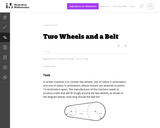
This task combines two skills from domain G-C: making use of the relationship between a tangent segment to a circle and the radius touching that tangent segment (G-C.2), and computing lengths of circular arcs given the radii and central angles (G-C.5). It also requires students to create additional structure within the given problem, producing and solving a right triangle to compute the required central angles (G-SRT.8).
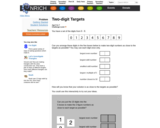
This Nrich problem is a fantastic opportunity for learners to apply knowledge of place value and offers a context for learning and practicing the relevant vocabulary (odd, even, multiple). The interactivity will help learners satisfy their curiosity in the sense of finding a 'better' solution, as it enables them to play around with the digits without having to commit anything to paper. This act of deciding whether one solution is better than another also provides a meaningful context in which to compare and order numbers.

This Nrich investigation is one that uses the very popular multilink cubes. It gives a wonderful opportunity for pupils to explore ways of recording. This activity is also designed to nurture children's curiosity by introducing mathematics into a familiar non-mathematical context. Children might end up pursuing different ideas from each other and this freedom to explore may well encourage learners to persevere more than they might usually. In this way, they will immerse themselves in the particular number sequence they have chosen to use, which will help them gain a deep understanding of its structure. This activity lends itself to pupils posing their own questions in the form “I wonder what would happen if...?”

This short video and interactive assessment activity is designed to teach fourth graders how to, given the perimeter, find the side length and area - squares.